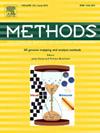A free method for patient-specific 3D-VR anatomical modeling for presurgical planning using DICOM images and open-source software
IF 4.2
3区 生物学
Q1 BIOCHEMICAL RESEARCH METHODS
引用次数: 0
Abstract
Introduction
Surgeons commonly use cross sectional images to plan and prepare for surgical procedures. However, cognitively translating 2D images to surgical settings can be difficult and lead to sub-optimal resections. Lymph node dissection can be challenging due to the inability to locate small metastatic lesions, and their proximity to at-risk organ(s). 3D volume rendered (3D-VR) patient specific images can help to address these challenges. We created patient-specific 3D-VR images using freely available open-source programs.
Methods
This study included patients part of the clinical trial NCT04857502. Patients received a PET/CT prior to radioguided surgery. 3D Slicer was used to segment anatomy of interest (organs and tumor lesion(s)). After segmentation, the data was exported as an .OBJ file with an accompanying .MTL file. Manipulation of the .MTL file to restore model properties to the .OBJ file, were completed and both files were uploaded into Autodesk Viewer. Surgeons then received an email link to access the finished 3D-VR model on their smartphone or laptop for peri-operative preparation and/or guidance.
Results
The method was used in a series of 14 patients with prostate cancer undergoing pelvic lymph node dissection with PSMA-radioguided robotic surgery using pre-operative PSMA PET/CT images acquired on average 103 ± 69 days prior to resection. The creation of the 3D-VR models was successfully conducted in all 14 cases. In all cases, the lesions identified on the pre-operative PET/CT imaging 3D-VR models were successfully removed during surgery.
Conclusion
We created patient-specific anatomical 3D-VR models that the surgeons can use for pre-surgical planning and intraoperative tumor localization, by applying free, open-source software that could be used in any procedure requiring careful and strategical planning.

求助全文
约1分钟内获得全文
求助全文
来源期刊

Methods
生物-生化研究方法
CiteScore
9.80
自引率
2.10%
发文量
222
审稿时长
11.3 weeks
期刊介绍:
Methods focuses on rapidly developing techniques in the experimental biological and medical sciences.
Each topical issue, organized by a guest editor who is an expert in the area covered, consists solely of invited quality articles by specialist authors, many of them reviews. Issues are devoted to specific technical approaches with emphasis on clear detailed descriptions of protocols that allow them to be reproduced easily. The background information provided enables researchers to understand the principles underlying the methods; other helpful sections include comparisons of alternative methods giving the advantages and disadvantages of particular methods, guidance on avoiding potential pitfalls, and suggestions for troubleshooting.
 求助内容:
求助内容: 应助结果提醒方式:
应助结果提醒方式:


